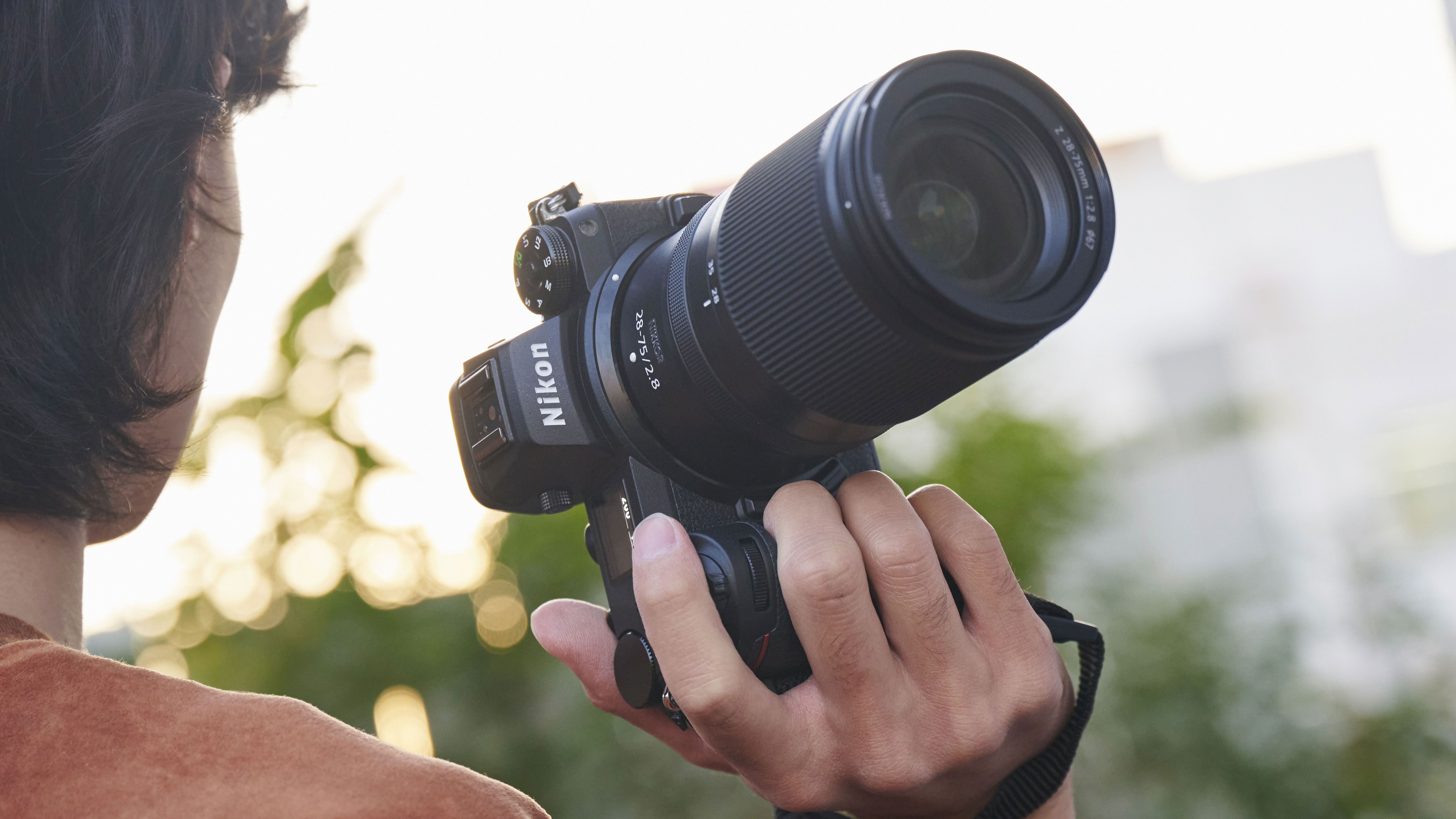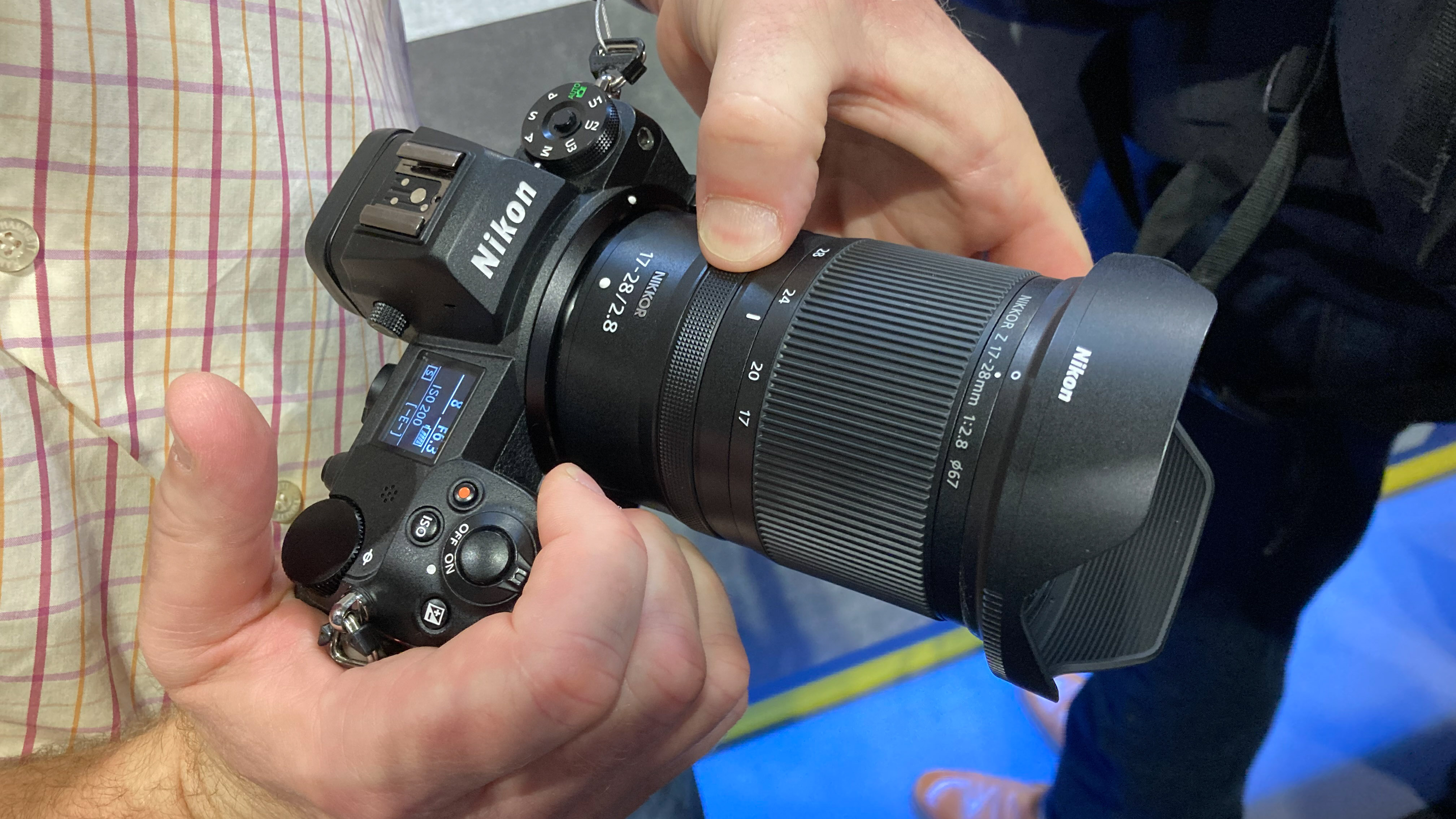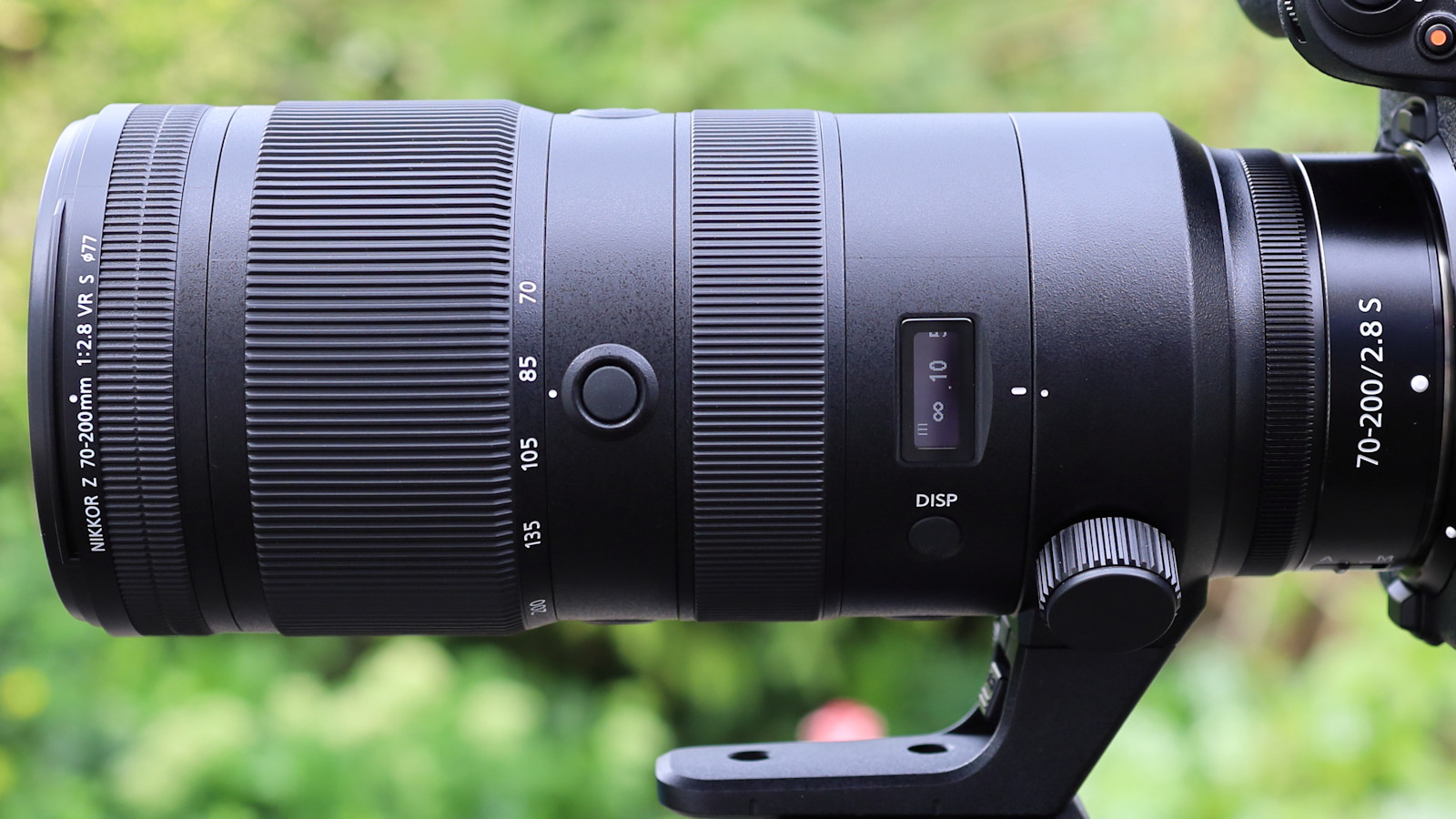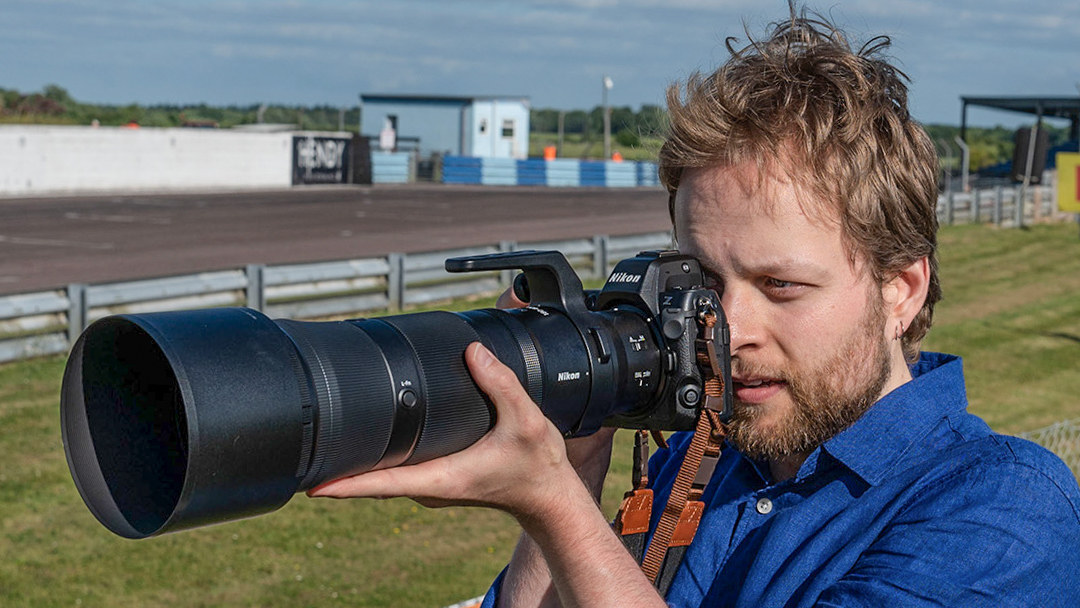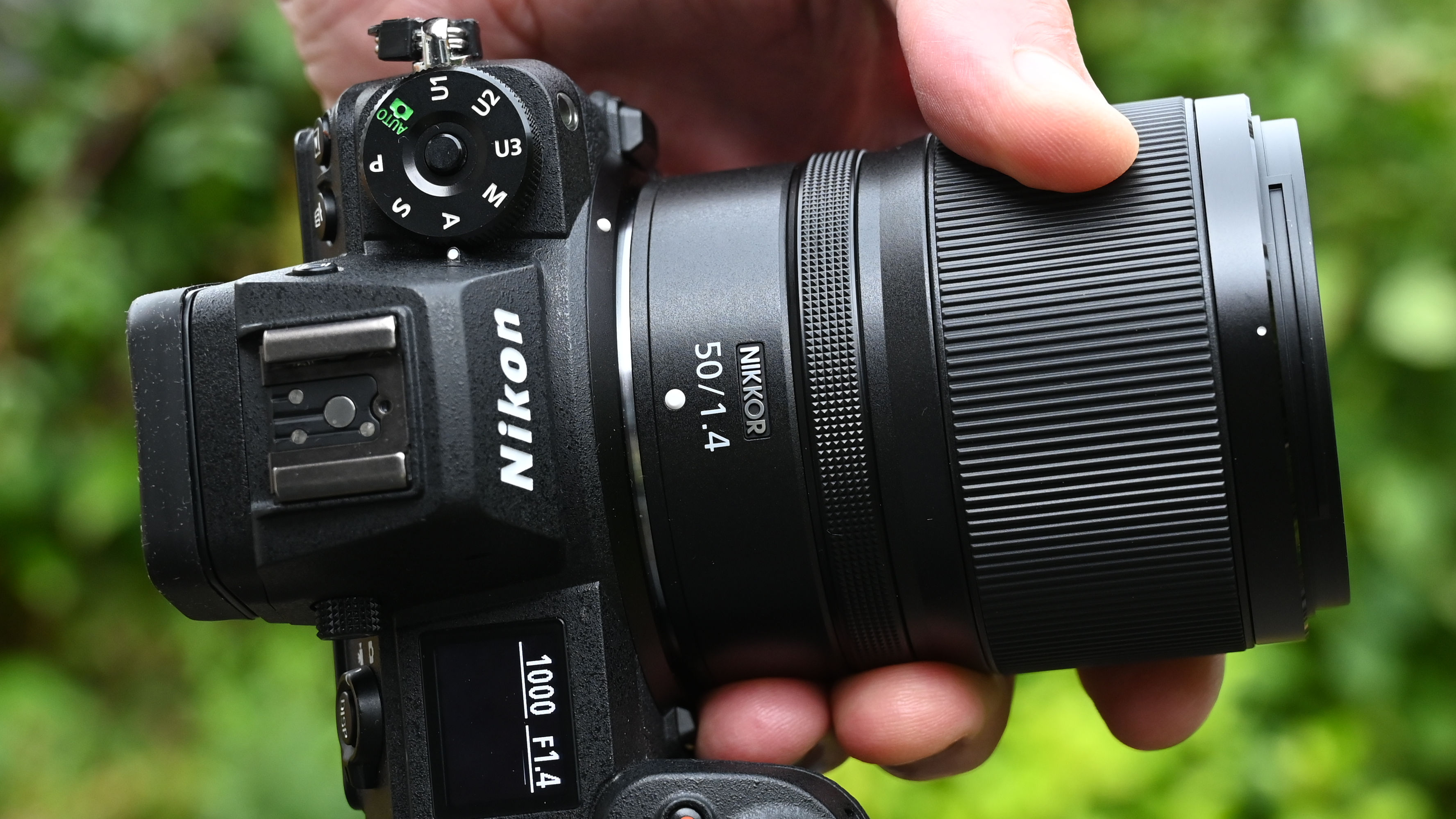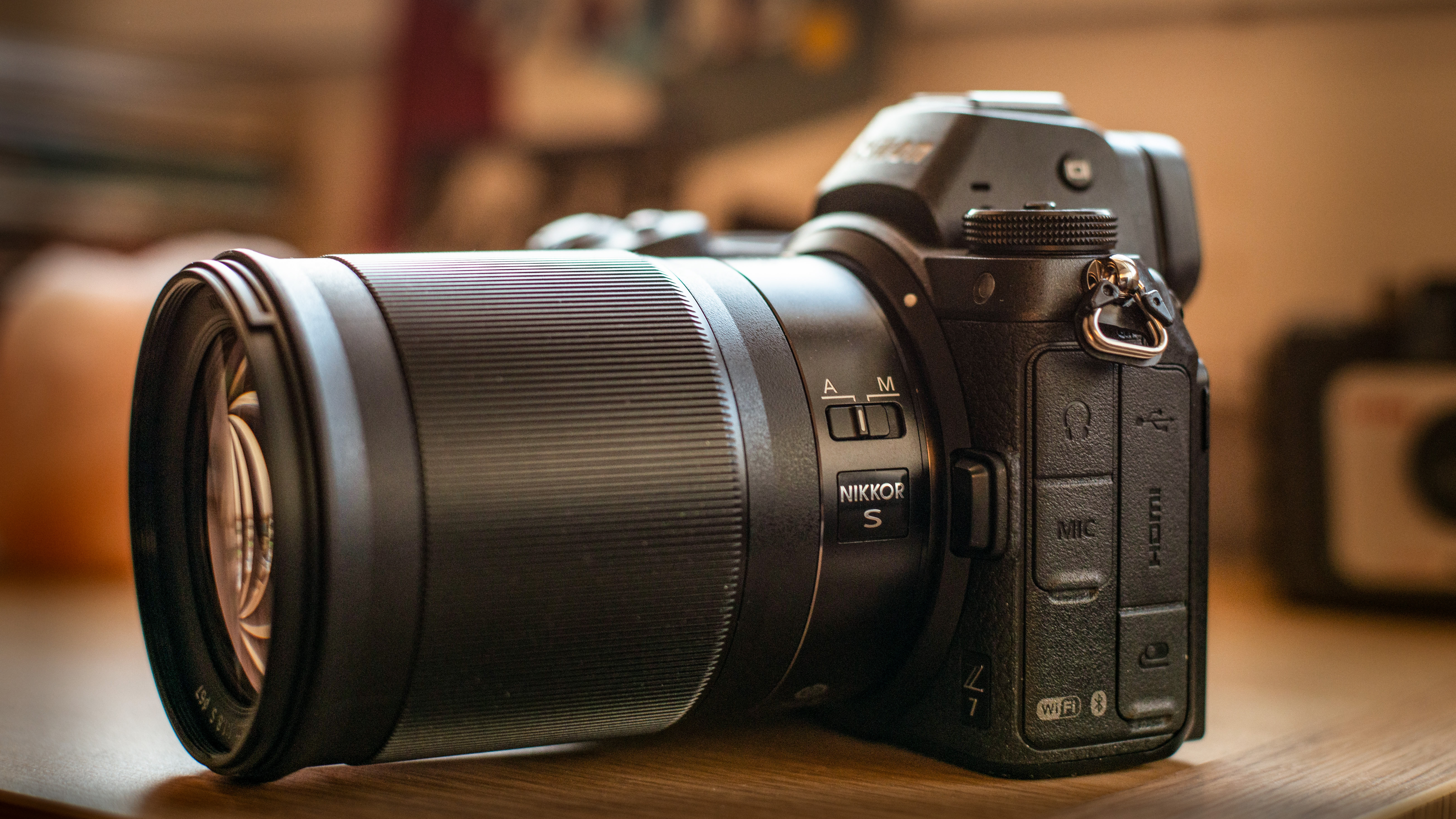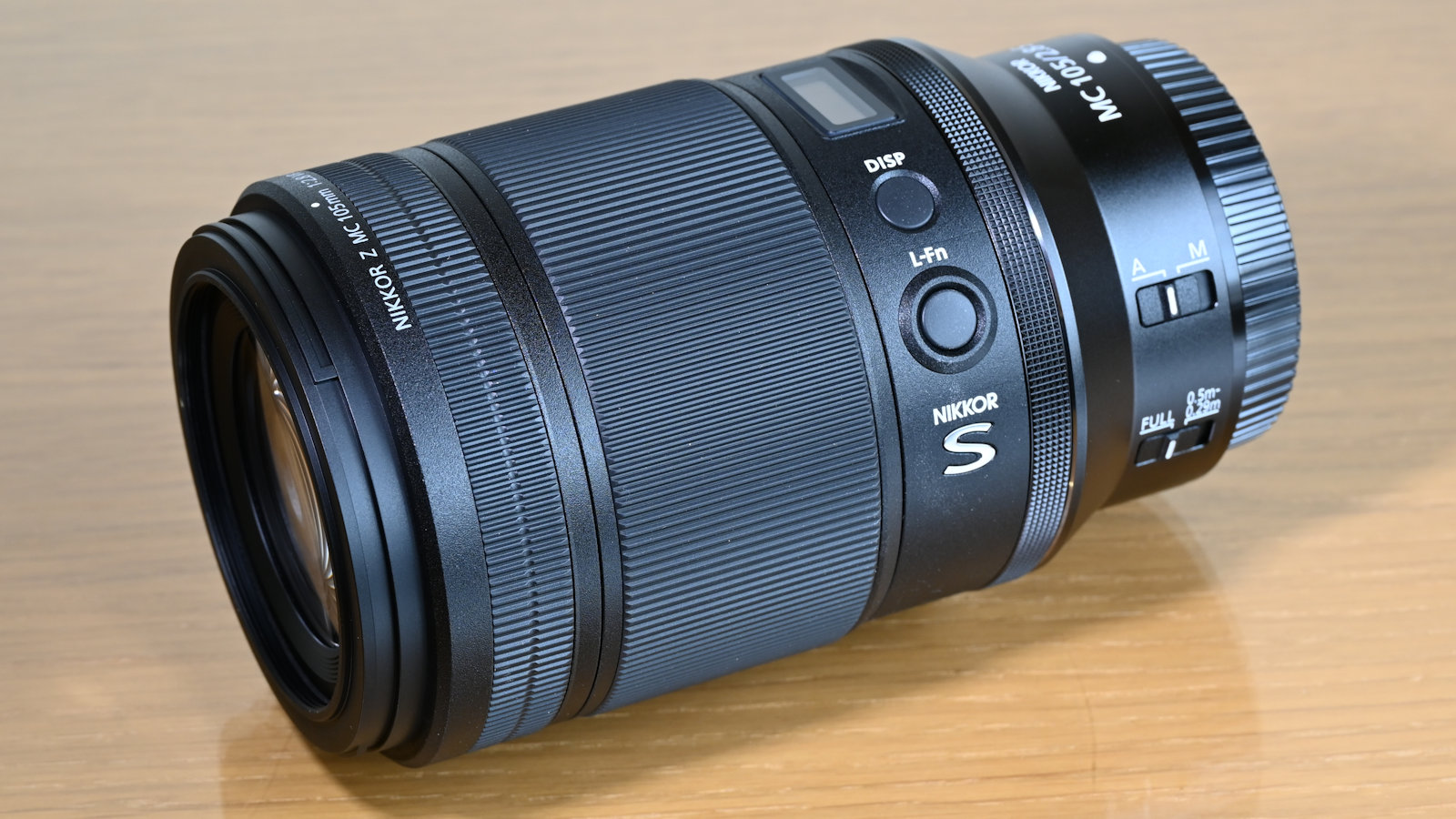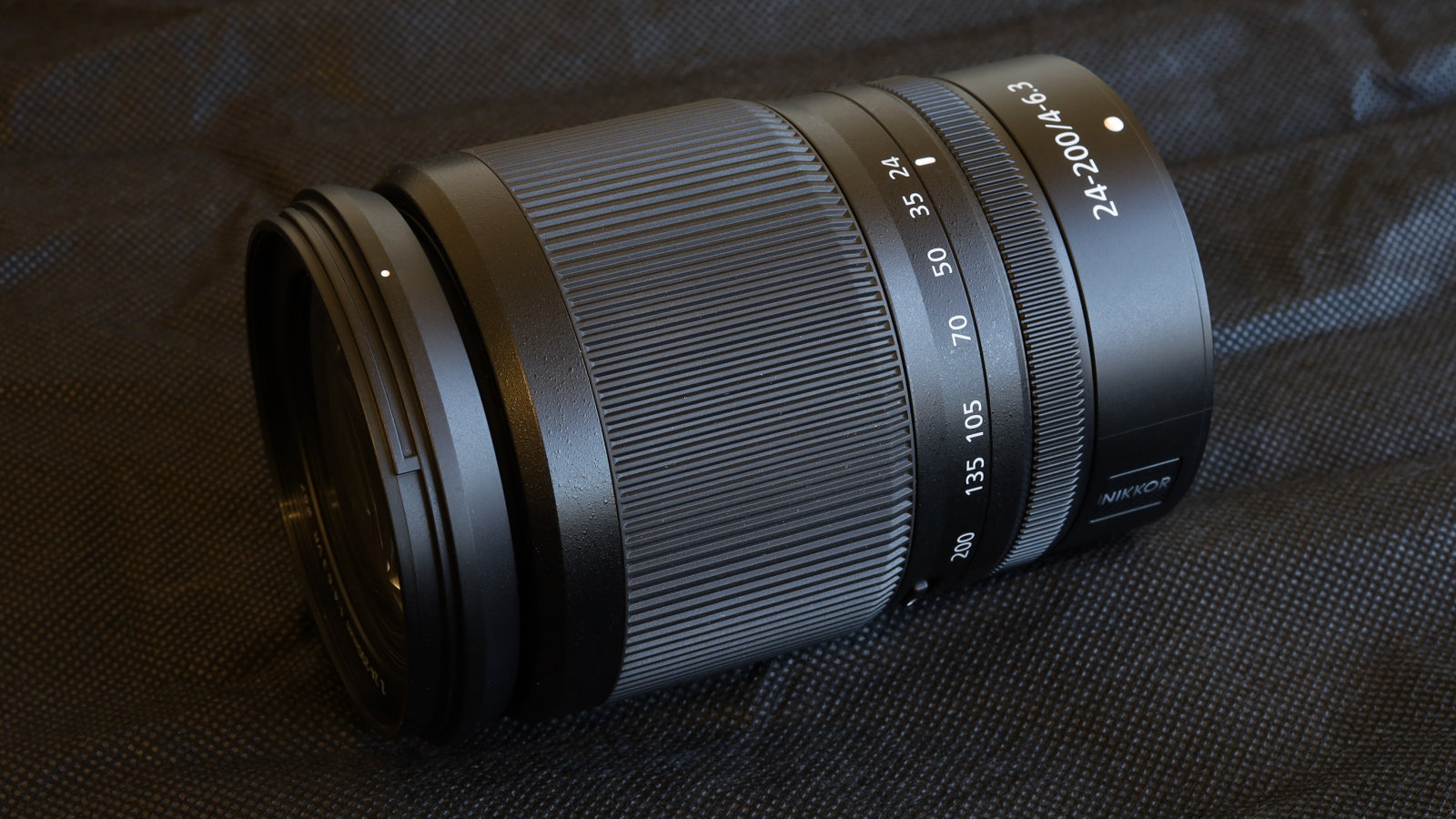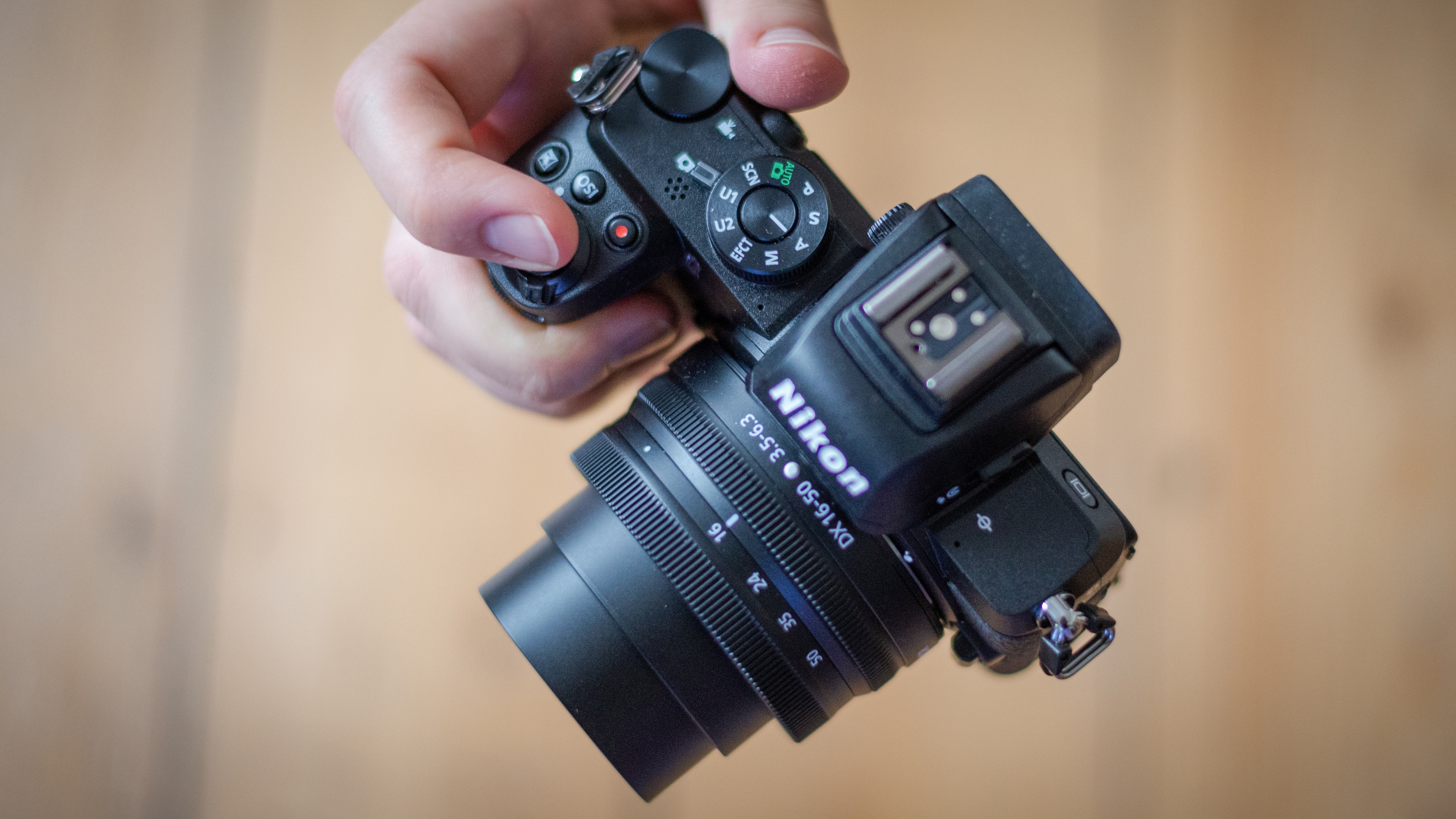The best Nikon Z lenses in 2025: the top buys for your Nikon Z-series mirrorless
Here's my pick of Nikon's best Nikkor Z-mount lenses for the Nikon Z5, Z5 II, Z6, Z6 II, Z6 III, Z7, Z7 II, Z8, Z9, Zf, Z50, Z50 II, Z30 & Z fc
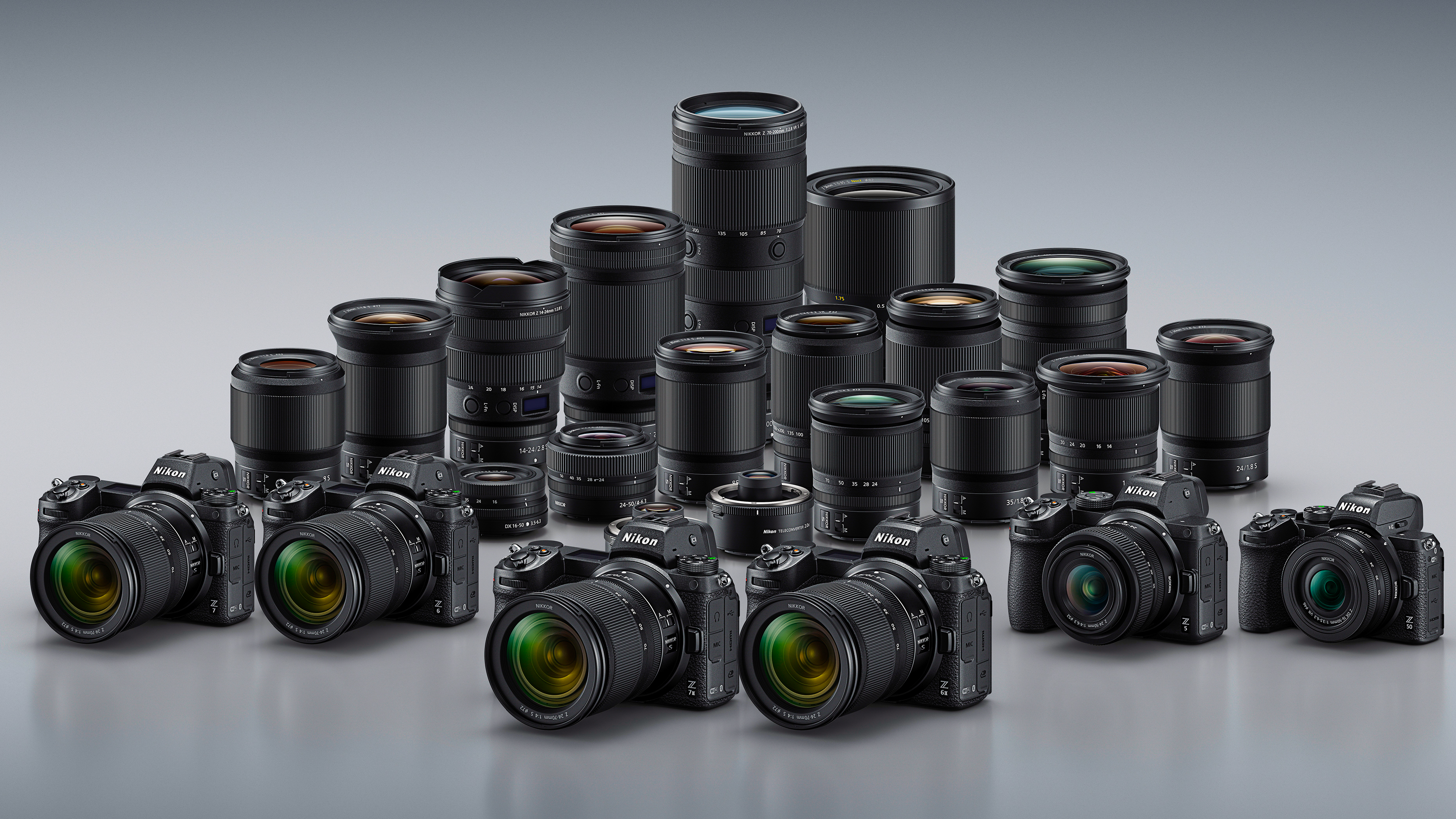
When Nikon created the Z-mount for its Z-series mirrorless camera range it opened up a whole new world of possibilities for its lens designers. The Z mount boasts a significantly larger lens flange than the F-mount used by the best Nikon DSLRs, while the absence of a mirror assembly in Z cameras allows the lens to be positioned much closer to the sensor than a DSLR. This design enables the creation of smaller, lighter, faster, and optically superior lenses. In fact, one of the key reasons Nikon Z mirrorless models are the best Nikon cameras is their exceptional and continually improving lens range.
Nikon had to start building its Z lens range from scratch when it launched the Z-series system in 2018, but now it has a comprehensive range that covers most of the bases, whatever you might shoot. The selection of the Nikon Z lenses continues to expand, covering every focal length that photographers and videographers might need.
As each new Nikon Z-fit lens has come into our labs for review, it has become apparent that Nikon's pushing of the virtues of the Z-mount's capabilities is no marketing hyperbole. There's not been a dud among them, and even the cheapest kit lens boasts optical quality that's off the charts compared to its F-mount forebears.
With such a variety available, choosing the right Nikon Z lens can be daunting. This gave me a bit of a headache too, when deciding on the best Nikon lenses for inclusion in this guide, because they all have a fair shout at being in the running. So I've zeroed in on what I reckon are the best buys that hit the quality and value sweet spot. They are the lenses that I would personally buy, and are not always the budget option: sometimes it's worth spending the extra.
But of course, different photographers will have different needs, and a Z8 or Z9 user will undoubtedly be prepared to spend more on a lens than an owner of an entry-level camera, such as the Z50 II or Z5 II, so I have provided links to our Nikon Z-series camera-specific guides at the end of this one!
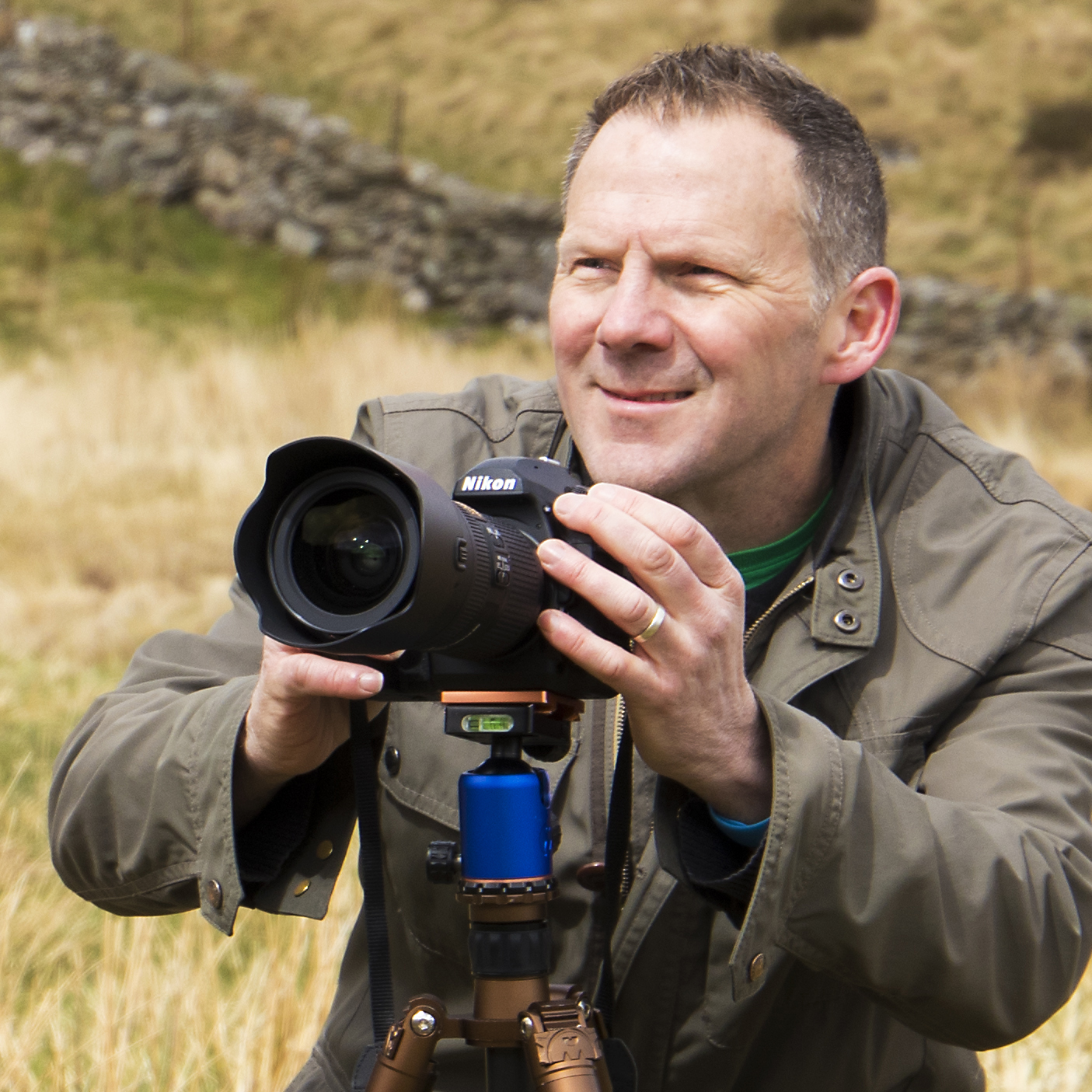
Adam is Guides Editor at Digital Camera World, and has several years of experience as a photography journalist, most notably as editor of Nikon bible N-Photo magazine. An undisputed Nikon know-all, he has put his unrivaled knowledge into practice, testing and reviewing Nikon lenses for this guide.
The Quick List
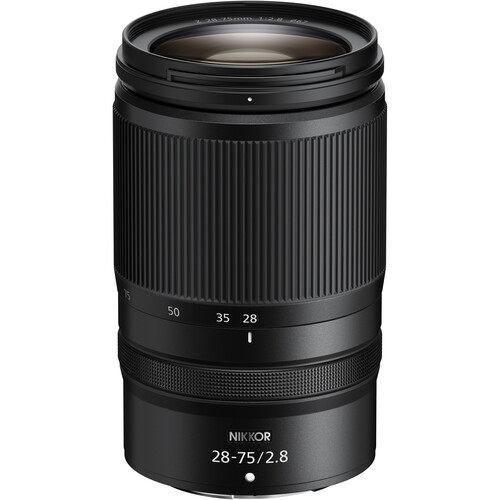
A whole stop faster than the Z 24-70mm f/4 S kit lens, this goes a little longer at the telephoto end but isn't quite as generous at the wide end.
Read more below
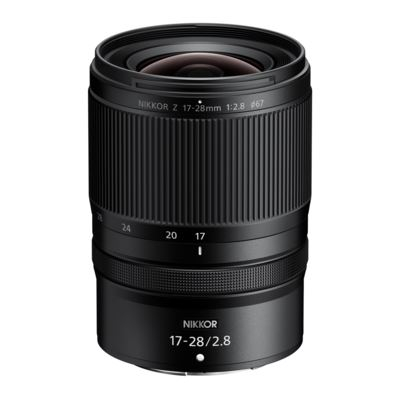
The Nikon Z 17-28mm is a beautiful compromise for a fast wide-angle zoom – it goes a little less wide than Nikon's top-of-the-line 14-24mm f/2.8 but costs a lot less.
Read more below
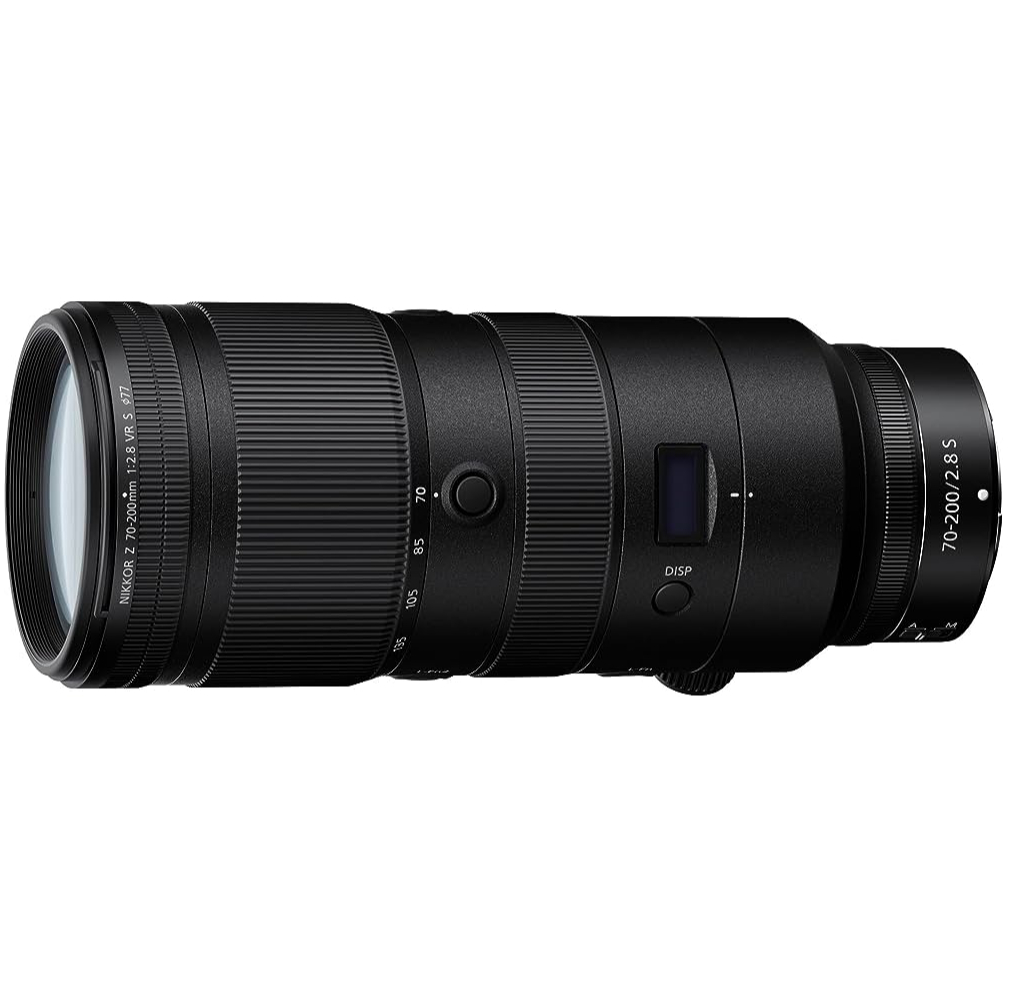
Nikon’s top-quality f/2.8 telephoto zoom for its full-frame mirrorless cameras sets new standards for image quality and all-around performance.
Read more below
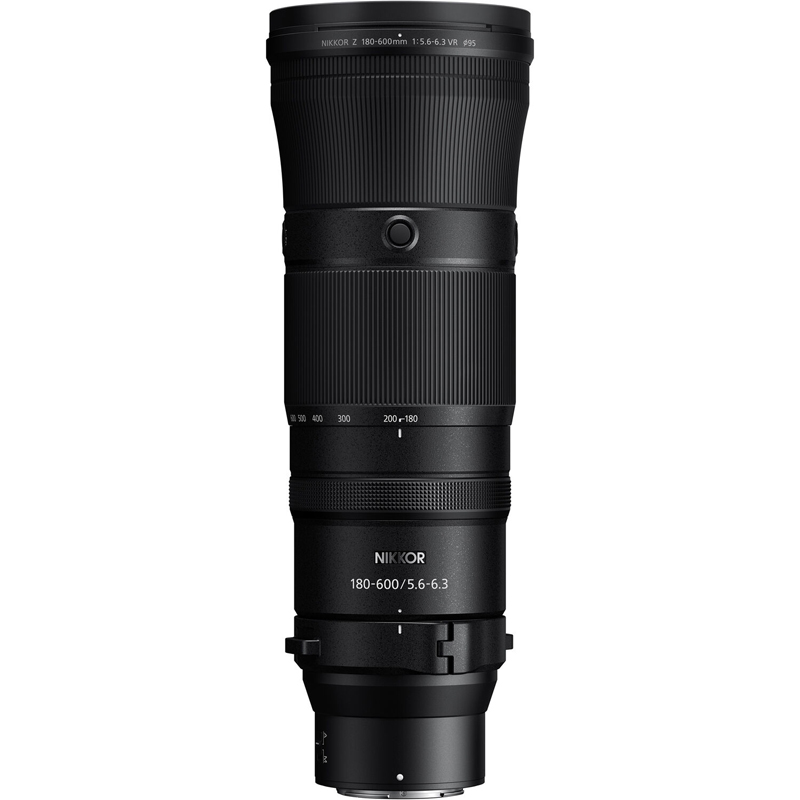
With a gargantuan reach, this super-duper tele-zoom is the best all-round option for getting closer to the action in motorsports and wildlife, without spending silly money.
Read more below
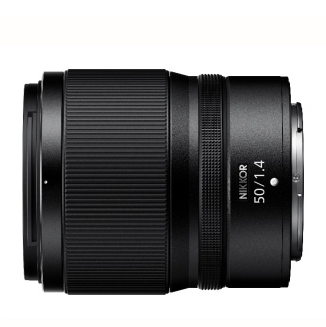
This fast f/1.4 nifty fifty prime lens provides a naturalistic perspective that's great for street and documentary shooting.
Read more below
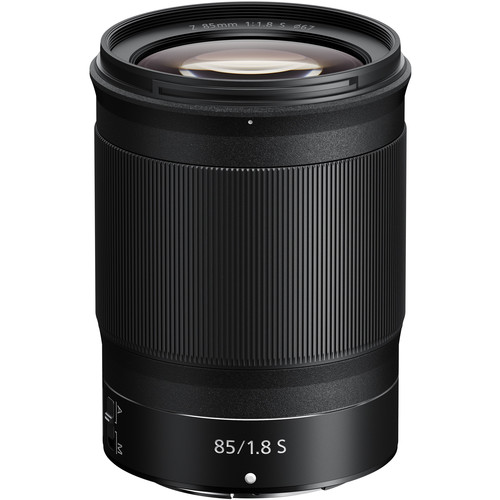
This 85mm is a relatively affordable route into portraiture. It may be f/1.8 rather than f/1.4, but it still produces images with brilliant bokeh in defocused areas.
Read more below
Load the next products ↴
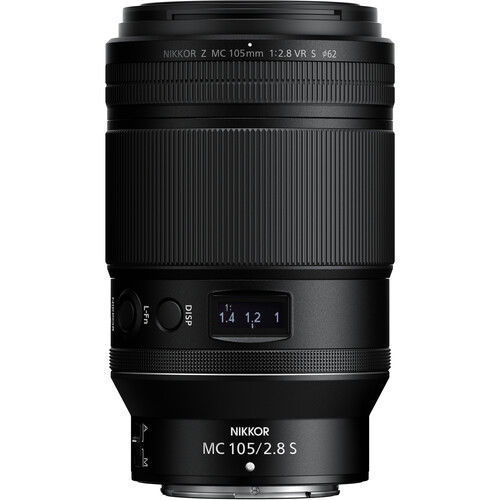
If you're looking to shoot close-up and macro images, I can wholeheartedly recommend this 105mm prime. Its image quality is simply sublime.
Read more below
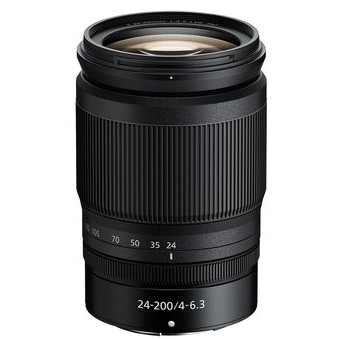
This superzoom lens doesn’t go overly large in telephoto reach but there’s plenty of wide-angle scope. More importantly, image quality is excellent.
Read more below

The dinky 16-50mm for DX sensor Nikons is a marvel, packing a 24-75mm equivalent zoom range into a super-slim optic that nevertheless contains 4.5-stop vibration reduction.
Read more below
Best Nikon Z lenses
Why you can trust Digital Camera World
Best everyday zoom
Specifications
Reasons to buy
Reasons to avoid
✅ You want a fast, affordable everyday lens: this is about half the price of Nikon's Z 24-70mm f/2.8, and sells for around the same as the slower Z 24-70mm f/4 S.
✅ You want the 'trinity' of lenses on a budget, this is the ideal accompaniment to Nikon's Z 17-28mm f/2.8 wide-angle and Z 70-180mm f/2.8 telephoto primes.
❌ You want to shoot wider: only reaching 28mm at the wide end might not seem like much difference, but 24mm squeezes a fair bit more into the frame.
❌ You want to shoot longer: while 75mm enables greater telephoto reach than most standard zooms, the Nikon 24-120mm f/4 goes even longer.
The Nikon Z 28-75mm f/2.8 has a slightly unusual focal range compared to the standard 24-70mm range in lenses such as the Nikon Z 24-70mm f/4 S kit lens, giving a little more telephoto reach but not as generous a wide-angle view. However, it's a whole stop faster, making it more comparable to the fully pro Nikon Z 24-70mm f/2.8 S II, but costing around half the price.
It's small and light, and delivers excellent center sharpness (although the Z 24-70mm f/4 S is a little sharper in the corners). But for most of us, the 28-75mm strikes the ideal balance between performance and value, offering the fast f/2.8 constant aperture demanded by pros but at a price that the rest of us can afford.
It's also the ideal partner to Nikon's 'almost trinity' Z 17-28mm f/2.8 and Z 70-180mm f/2.8 lenses, and they all share the same 67mm filter thread, so you share filters between all three lenses.
See our full Nikon Z 28-75mm f/2.8 review


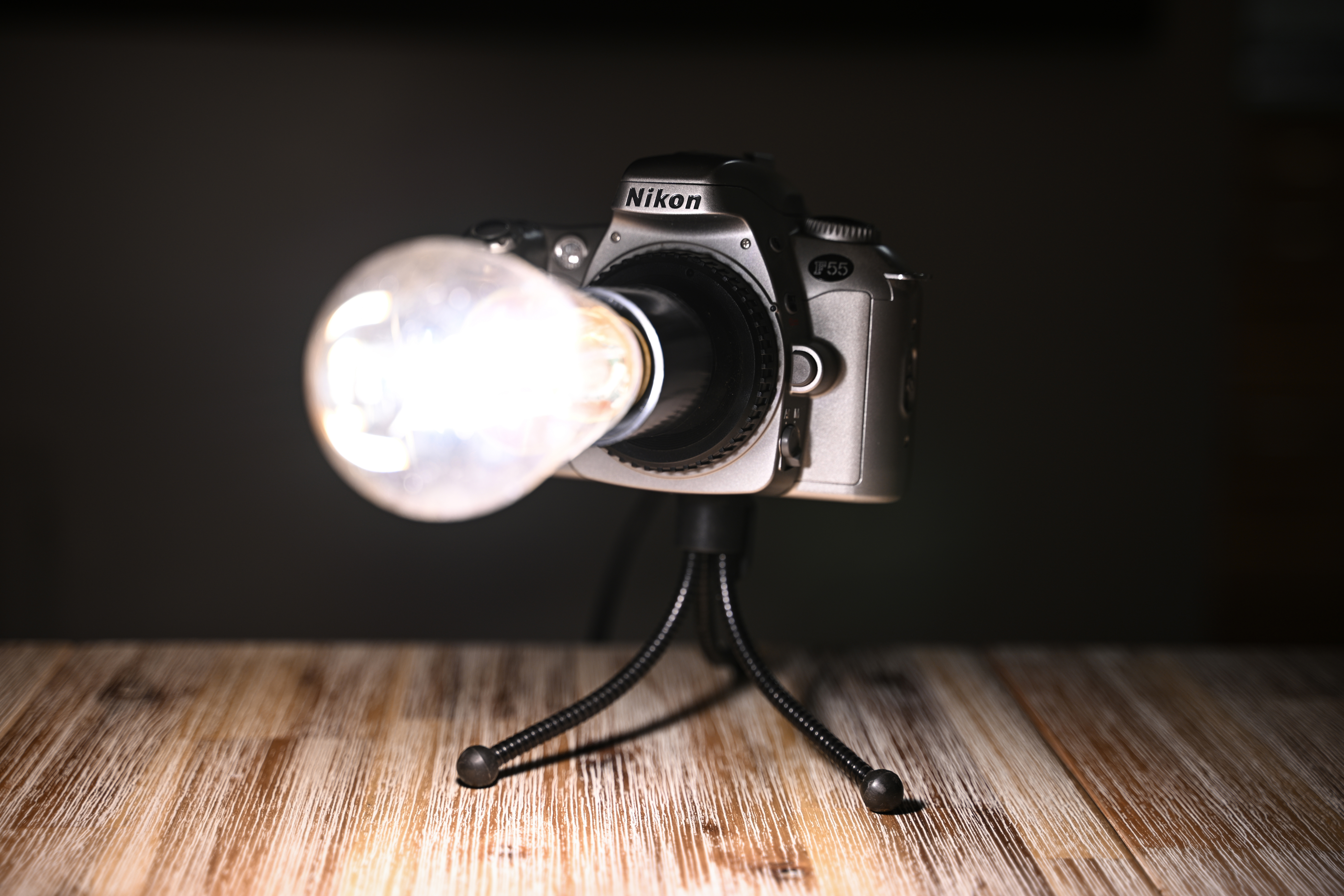
Features ★★★★1/2 | This alternative ‘trinity’ f/2.8 standard zoom features sharp and snappy autofocus. | Row 0 - Cell 2 |
Design ★★★★1/2 | It's not an S-line lens, but build quality is robust with extensive weather-seals. | Row 1 - Cell 2 |
Performance ★★★★★ | Center sharpness is excellent throughout the zoom range, extreme edge sharpness less so. | Row 2 - Cell 2 |
Value ★★★★★ | Much less expensive than a typical ‘trinity’ 24-70mm f/2.8 standard zoom and top value. | Row 3 - Cell 2 |
Best wide-angle zoom
Specifications
Reasons to buy
Reasons to avoid
✅ You want an affordable option: it's priced lower than other f/2.8 wide zooms, making it a great budget buy.
✅ You want in-body stabilization (IBIS) support: although it lacks optical VR, it takes full advantage of (IBIS) in full-frame Z cameras.
❌ You want an ultra-wide option, as the 17-28mm range is more limited at the wide end compared to Nikon's 14-24mm f/2.8 or 14-30mm f/4 wide zooms.
❌ You want the absolute best: while it's a great compromise, those seeking the ultimate performance might prefer additional features.
Pro and enthusiast photographers aspire to owning zooms with fast, constant f/2.8 maximum apertures – but these come at a price and with bulk. The Nikon Z 17-28mm is a beautiful compromise for creating a fast wide-angle zoom. By providing a lens with a narrower wide-angle range than the more traditional 14-24mm f/2.8, Nikon has created a lens that is easier to carry and more affordable for users. As such, it follows on from – and becomes the perfect partner to – the Nikon Z 28-75mm f/2.8 standard zoom.
The autofocus system is very snappy for stills, while also delivering smooth transitions for video capture, along with negligible focus breathing and virtually silent operation. There’s no optical VR (Vibration Reduction), but the lens takes full advantage of in-body stabilization, featured in all of Nikon’s full-frame Z system cameras.
It doesn't go as wide as Nikon's other wide-angle zooms, and if that's more important to you than outright maximum aperture, the Nikon Z 14-30mm f/4 S has a similar price tag but is a stop slower. But overall, the Nikon Z 17-28mm f/2.8 delivers excellent image quality and all-round performance – at a bargain price!
See our full Nikon Z 17-28mm f/2.8 review



Features ★★★★1/2 | It's not as wide as Nikon's other wide zooms, but has a fast f/2.8 aperture. | Row 0 - Cell 2 |
Design ★★★★1/2 | Build quality feels solid despite the relatively lightweight construction. | Row 1 - Cell 2 |
Performance ★★★★★ | Sharpness levels are spectacular, but drops off a little zoomed in to 28mm. | Row 2 - Cell 2 |
Value ★★★★★ | Top value for a fast wide-angle zoom, as long as you can live without an extreme 14mm at the wide end. | Row 3 - Cell 2 |
Best workhorse telephoto zoom
Specifications
Reasons to buy
Reasons to avoid
✅ You want razor-sharp resolution across the entire image frame, even when shooting wide-open at f/2.8.
✅ You want fast and accurate autofocus: this is ideal for fast-paced shooting scenarios.
❌ You want a more affordable option; it comes with a high price tag, though its performance justifies it.
❌ You want a lightweight, portable lens; it's relatively heavy due to its robust build and high-quality components, making it less ideal for travel.
Nikon’s top-quality Z 70-200mm f/2.8 VR S sets new standards for image quality and all-around performance. From the moment I started shooting with it, I could tell it was something special. The handling is superb. It feels perfectly balanced on Nikon Z bodies, and all the controls are exactly where I expect them to be. But it’s the performance that truly blows me away. The autofocus is incredibly fast and unerringly accurate. Whether tracking fast-moving subjects at a sporting event or trying to nail the focus on a fleeting expression in a portrait, this lens just delivers, shot after shot.
The optical VR (Vibration Reduction) is also exceptionally effective, enabling handheld shooting in lighting conditions I wouldn’t have dreamed of with older lenses, while still getting critically sharp images. And speaking of sharpness, it’s simply stunning, right across the entire frame, even when shooting wide open at f/2.8. The clarity and contrast are phenomenal, and it renders colors beautifully. Nikon has packed some serious optical technology into this lens, with a complex arrangement of elements including fluorite and SR (Short-wavelength Refractive) glass, and it really shows in the minimal levels of color fringing and distortion.
The build quality is also top-notch, as I’d expect from an S-line lens. It’s fully weather-sealed, and the fluorine coatings on the front and rear elements do a great job of repelling moisture and grease, which gives peace of mind when I’m working in less-than-ideal conditions. It’s genuinely hard to find fault with this lens. If there’s any drawback, it’s the professional-grade price tag, but in my experience, the Nikon Z 70-200mm f/2.8 VR S is worth every penny for the consistent, spectacular results and reliable performance it offers. It’s simply the best 70-200mm I’ve ever had the pleasure of using. But, if you can't stretch to it, the Nikon Z 70-180mm f/2.8 makes for a reasonable budget alternative.
See our full Nikon Z 70-200mm f/2.8 VR S review
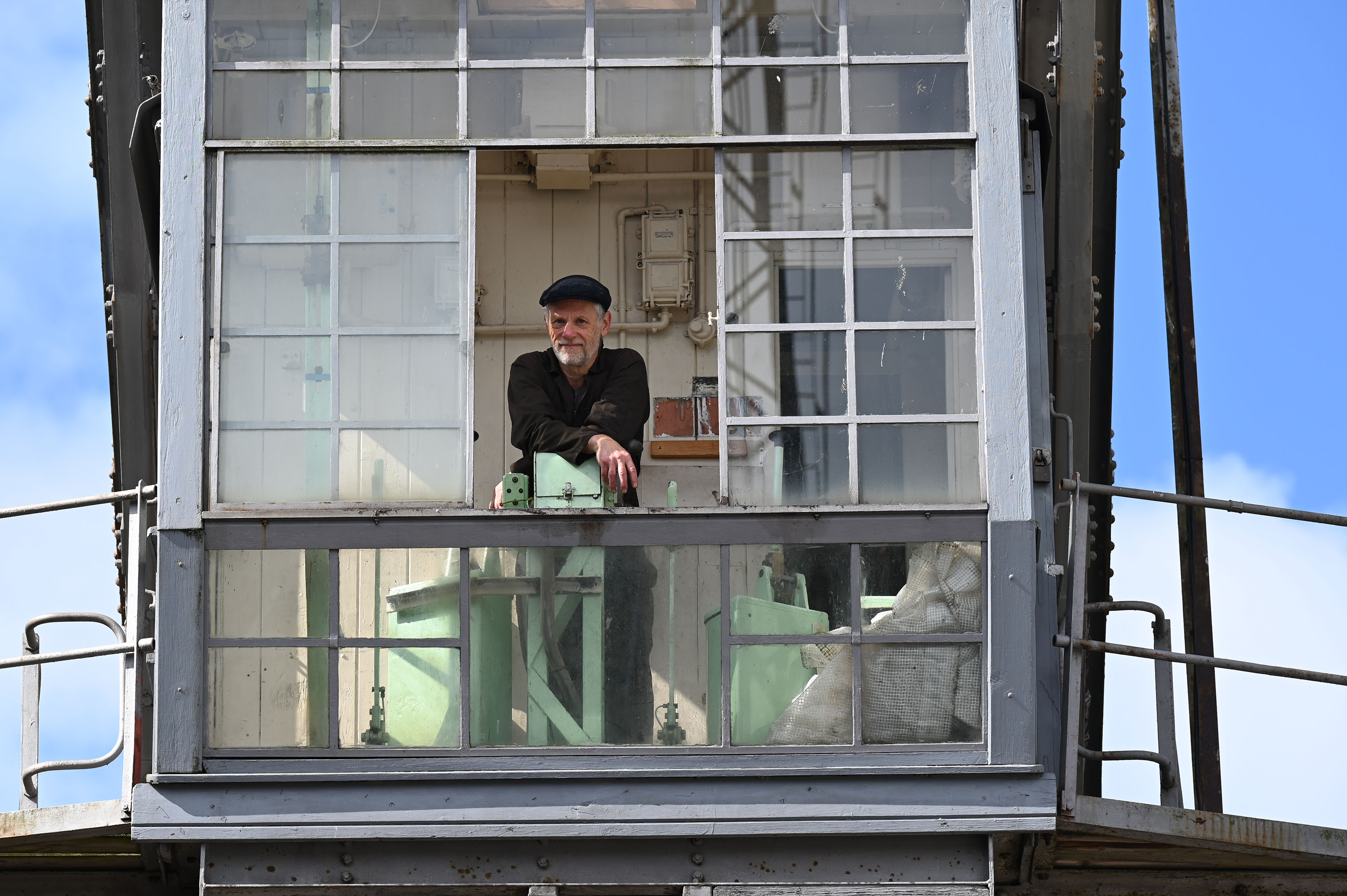

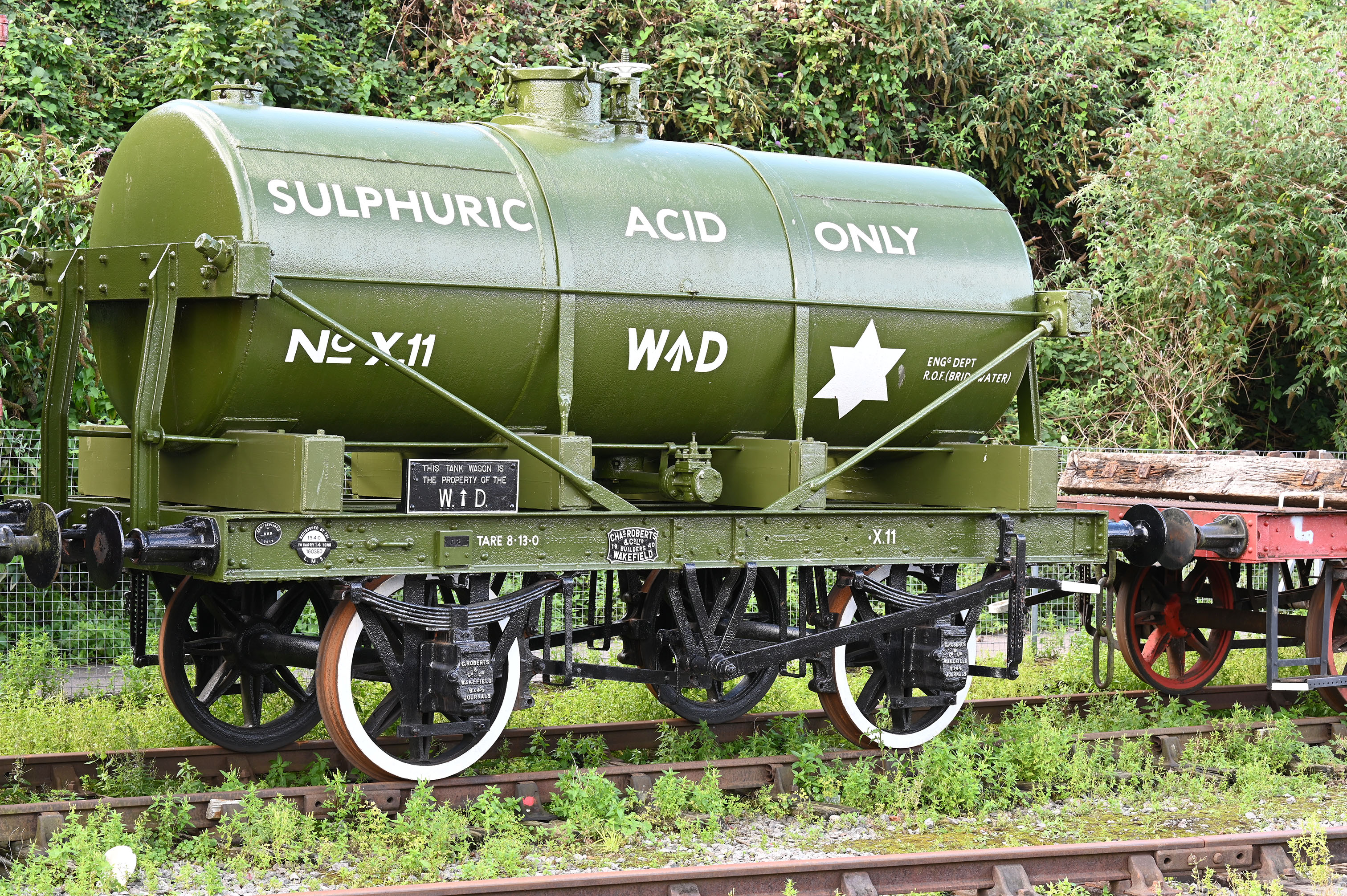
Features ★★★★★ | A packed feature list includes ED, SR and fluorite glass, L-fn buttons, customizable control rings and an OLED display. |
Design ★★★★★ | It’s designed and built as a fully pro-grade telephoto zoom, catering to the most demanding professional and enthusiast photographers. |
Performance ★★★★★ | Sharpness is scintillating, bokeh is beautiful, autofocus is super-fast and VR is highly effective. |
Value ★★★★☆ | Although very expensive, the lens is very good value for money, considering the features, design and performance. |
Best super-telephoto zoom
Specifications
Reasons to buy
Reasons to avoid
✅ You want a telephoto zoom with exceptional image quality that is ideal for wildlife and sports photography.
✅ You want massive telephoto reach, and if 600mm still isn't enough for you, it's compatible with Nikon's Z-mount 1.4x and 2x teleconverters.
❌ You want a compact lens: this is more than 300mm long and weighs almost 2kg, which can be less convenient for casual shooting.
❌ You want a 'fast' super-tele zoom; the f/5.6-6.3 max aperture is on the slow side.
With a monster zoom range stretching from 180mm all the way to 600mm, the Nikon Z 180-600mm f/5.6-6.3 VR is a real treat for anyone who loves to shoot wildlife and action photography. I was expecting a lens with this kind of reach to be a beast, but it’s surprising how manageable it is for handheld shooting. It's reasonably lightweight, and the optical VR (Vibration Reduction) is very effective, providing impressively sharp shots even at slower shutter speeds, which is fantastic for those less-than-ideal lighting conditions you often encounter with wildlife.
With internal zoom and focus, the lens doesn’t extend or change balance, which helps with handling. Autofocus performance is another area where this lens shines; it's super fast and locks onto subjects with impressive accuracy, and gave me a really high hit rate, even with fast-moving birds or athletes. The customizable L-Fn buttons are a nice touch, allowing quick access to your preferred functions. The weather sealing and fluorine coating on the front element also give me confidence.
Image quality-wise, shots are razor-sharp across the entire zoom range, with great contrast and color rendition. I’ve noticed minimal color fringing, and any slight pincushion distortion is easily corrected in-camera or in post. If I’m looking for downsides, well, it’s an f/5.6-6.3 lens, so it’s not the fastest super-telephoto out there, but for the price and the incredible reach, it’s a trade-off I’m more than willing to make.
If you need a faster super-tele zoom and demand full S-line quality, the Nikon Z 100-400mm f/4.5-5.6 VR S could be a better option. Nikon also has a fairly extensive roster of Z-series super-tele primes, though the hefty prices put them in the reserve of the most deep-pocketed pros. But for any Nikon Z shooter looking for a powerful, sharp, and versatile telephoto zoom without completely emptying their bank account, this lens is an absolutely fantastic option.
See our full Nikon Z 180-600mm f/5.6-6.3 VR review
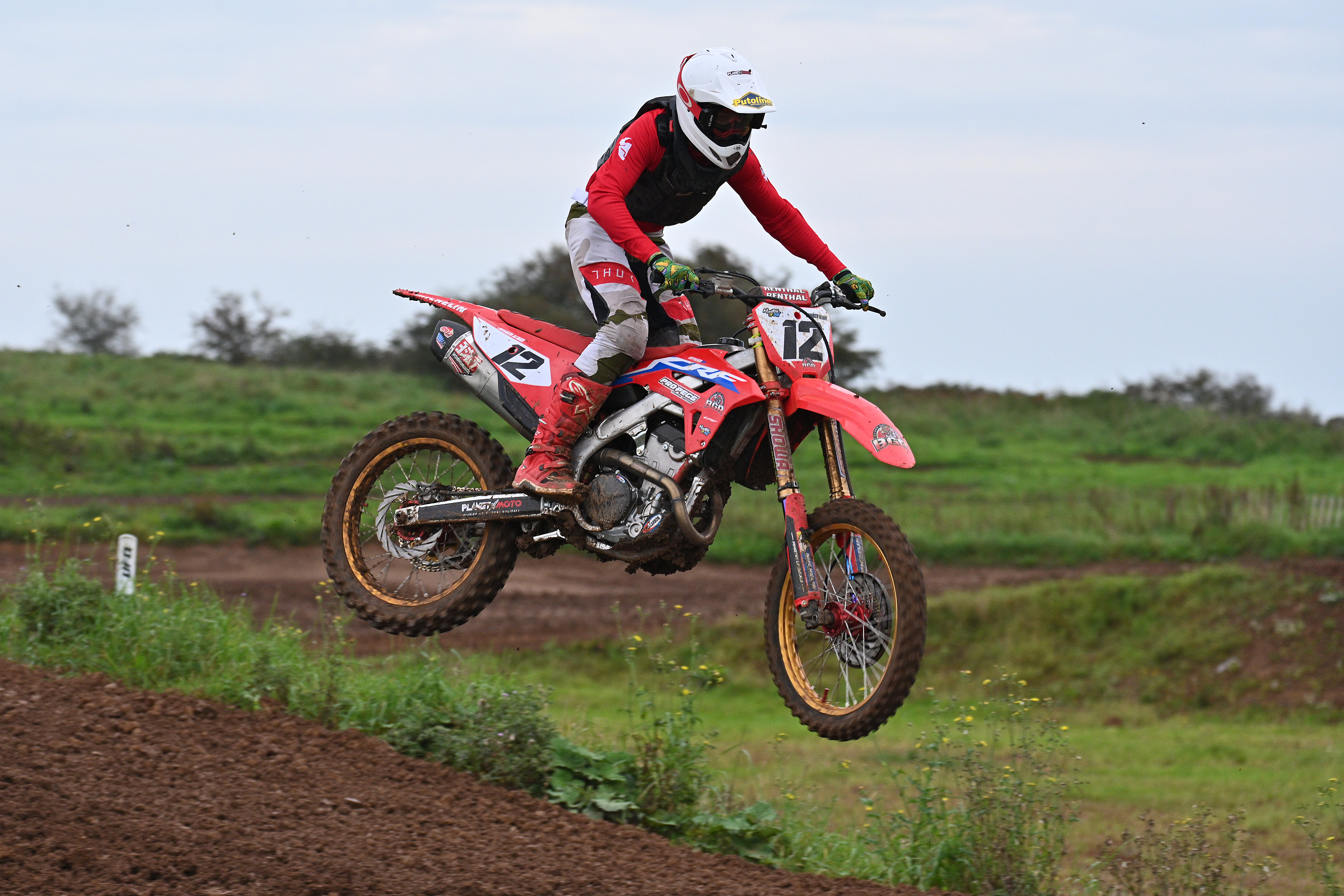


Features ★★★★★ | A gargantuan 180-600mm zoom range is the standout feature, backed by zippy autofocus and 5.5-stop optical VR. |
Design ★★★★★ | Zoom and focus is fully internal, and it's easy to locate subjects zoomed out then fully zoom in with a 90-degree twist of the zoom ring. |
Performance ★★★★★ | The lens proved highly impressive in real-world tests, with superb sharpness, clarity, contrast and color rendition. |
Value ★★★★1/2 | It's Nikon's most 'affordable' ultra-telephoto zoom – although admittedly that's a relative term! |
Best standard 'nifty fifty' prime
Specifications
Reasons to buy
Reasons to avoid
✅ You want excellent bokeh, as this lens produces remarkably smooth defocused areas, making it ideal for portraits and creative photography.
✅ You want a fast, well-built 50mm lens that doesn't cost the earth; it's a shade cheaper than its Z 50mm f/1.8 S cousin.
❌ You want an even faster 50mm prime, although the fully pro Nikon Z 50mm f/1.2 S costs around four times the price for just 1/3-stop brighter aperture.
❌ You want additional features or controls; even switching from auto to manual focus requires resorting to in-camera menus.
A 50mm prime is a classic focal length that offers a similar angle of view to human eyesight, but what's curious about the Z 50mm f/1.4 is that it's not only cheaper than Nikon's 50mm f/1.8 S-line lens, but 2/3-stop faster while being virtually the same size and weight. Having that f/1.4 capability is invaluable when the light isn't ideal or you really want to make subjects pop with a shallow depth of field. Use it on an APS-C Nikon Z camera rather than a full-frame one, and it becomes a rather nice short telephoto that is ideal for portraits.
Autofocus is respectably quick and impressively quiet. It has dual control rings that can be customized; typically, I’ll set one for focus and the other for aperture control. It’s fairly compact and lightweight, which makes it easy to carry around. The 9-bladed aperture helps create some pleasing bokeh in out-of-focus areas. Image quality-wise, sharpness is good in the center, even when shooting wide open at f/1.4. It handles distortion well, and chromatic aberrations are kept to a minimum. The minimum focusing distance of around 0.37 meters is also handy for getting in a bit closer to subjects.
While it's not an S-line lens, and can't quite match the Nikon Z 50mm f/1.8 S for outright image quality, for the price and the performance it delivers, particularly that fast aperture and good autofocus, this is the best choice nifty fifty for the majority of Z-mount shooters.
Read our full Nikon Z 50mm f/1.4 review



Features ★★★★☆ | Top of the feature list is the fast f/1.4 aperture and the lens has dual customizable control rings. |
Design ★★★★☆ | It looks and feels a little basic, with no A/M focus mode switch, but the build includes weather-seals. |
Performance ★★★★☆ | It’s not one of Nikon’s up-market S-line lenses, but performance combines good sharpness and nice bokeh. |
Value ★★★★★ | The lens is excellent value for a 50mm f/1.4, undercutting the list price of the Z f/1.8 version. |
Best portrait prime
Specifications
Reasons to buy
Reasons to avoid
✅ You want an ideal focal length for portraiture, as the 85mm distance is perfect for capturing head-and-shoulders and half-length shots.
✅ You want a lightweight option, ensuring portability without sacrificing performance.
❌ You want a lens with built-in stabilization, although all current full-frame Z-series Nikons offer in-body image stabilization.
❌ You want a faster aperture option, as many photographers prefer 85mm f/1.4 lenses for their tighter depth of field and enhanced background blur.
An 85mm lens is often cited as having the ideal focal length for portraiture, and the sharpness the Nikon Z 85mm f/1.8 S delivers is phenomenal, especially in the center of the frame, even when shooting wide open at f/1.8. It creates that beautiful, creamy bokeh that makes subjects stand out, and is handy in low-light situations, too.
The build quality is typical Nikon S-line – sturdy, robust, and feels like it can handle the rigors of professional use. The focus ring is smooth and precise, which is great for those moments when I want to switch to manual focus for critical adjustments, although the autofocus itself is generally quick and reliable. I also like that it has a dedicated A/M switch, making that transition seamless, rather than having to delve into camera menus. Distortion is practically non-existent, which means less time spent correcting in post-production.
While it might not have the extreme f/1.2 aperture of its bigger, more expensive Z 85mm f/1.2 S sibling, this f/1.8 version strikes an incredible balance between performance, size, weight, and, importantly, price. It’s relatively lightweight, making it comfortable to use for extended periods. It consistently produces images with wonderful clarity, lovely rendering, and that distinct subject separation that makes 85mm primes so popular. For any Nikon Z shooter serious about portraiture, I can't recommend the Z 85mm f/1.8 S highly enough; it’s simply an outstanding performer.
See our full Nikon Z 85mm f/1.8 S review



Features ★★★★★ | Like its 50mm sibling, this S-line lens doesn’t look anything special but packs strong features in terms of glass and coatings. |
Design ★★★★★ | It’s not overly compact for an 85mm f/1.8 prime but the optical path is quite complex and the lens is weather-sealed. |
Performance ★★★★★ | Perfect for portraiture, the combination of focal length and aperture helps to deliver superb sharpness and beautiful bokeh. |
Value ★★★★☆ | It’s pricey for an f/1.8 lens but at least it’s less than a third of the price of the Z 85mm f/1.2. |
Best macro lens
Specifications
Reasons to buy
Reasons to avoid
✅ You want ultra-fine focusing adjustments, thanks to the electronically coupled focus ring and autofocus range limiter.
✅ You want effective optical VR, which works in tandem with the IBIS of Nikon’s full-frame Z-series cameras.
❌ You want additional versatility, as some may find the 105mm focal length less suitable for wider applications beyond macro.
❌ You want a lower price point, as this lens is positioned as a premium offering.
The sharpness the Nikon Z MC 105mm f/2.8 VR S delivers is simply breathtaking, right across the frame, from infinity down to its 1.0x macro magnification at the closest focusing distance of 0.29m. Whether capturing the intricate details of an insect's wing or shooting a portrait, the clarity and resolution are consistently outstanding. Chromatic aberrations and distortion are practically non-issues, which speaks volumes about its optical design.
Autofocus is impressively fast and accurate, even at very close distances, which can be tricky for many macro lenses. The uprated optical VR system is a significant benefit, especially when shooting handheld in less-than-ideal light or trying to maintain critical sharpness at macro magnifications. Beyond its macro capabilities, it's a wonderfully versatile prime. It’s fantastic for portraiture, offering beautiful subject separation and that lovely compression you get from a 105mm focal length.
The handling is top-notch S-line quality, with a robust, weather-sealed build. It also features a multi-function OLED display, which is useful for checking focus distance or aperture, along with a customizable L-Fn button and control ring. The autofocus range limiter is also handy for speeding up focus acquisition when I know my subject will be within a certain range.
While it's a premium lens with a corresponding price, the performance and versatility it offers are well worth the investment. It’s not just a macro lens; it’s a high-performance prime that delivers sensational results across a variety of shooting scenarios. It’s definitely a jewel in Nikon’s Z-mount lineup. For those on a tighter budget, the alternative Nikon Z MC 50mm f/2.8 is worth considering, especially if you shoot with a DX format Z-series Nikon.
See our full Nikon Z MC 105mm f/2.8 VR S review

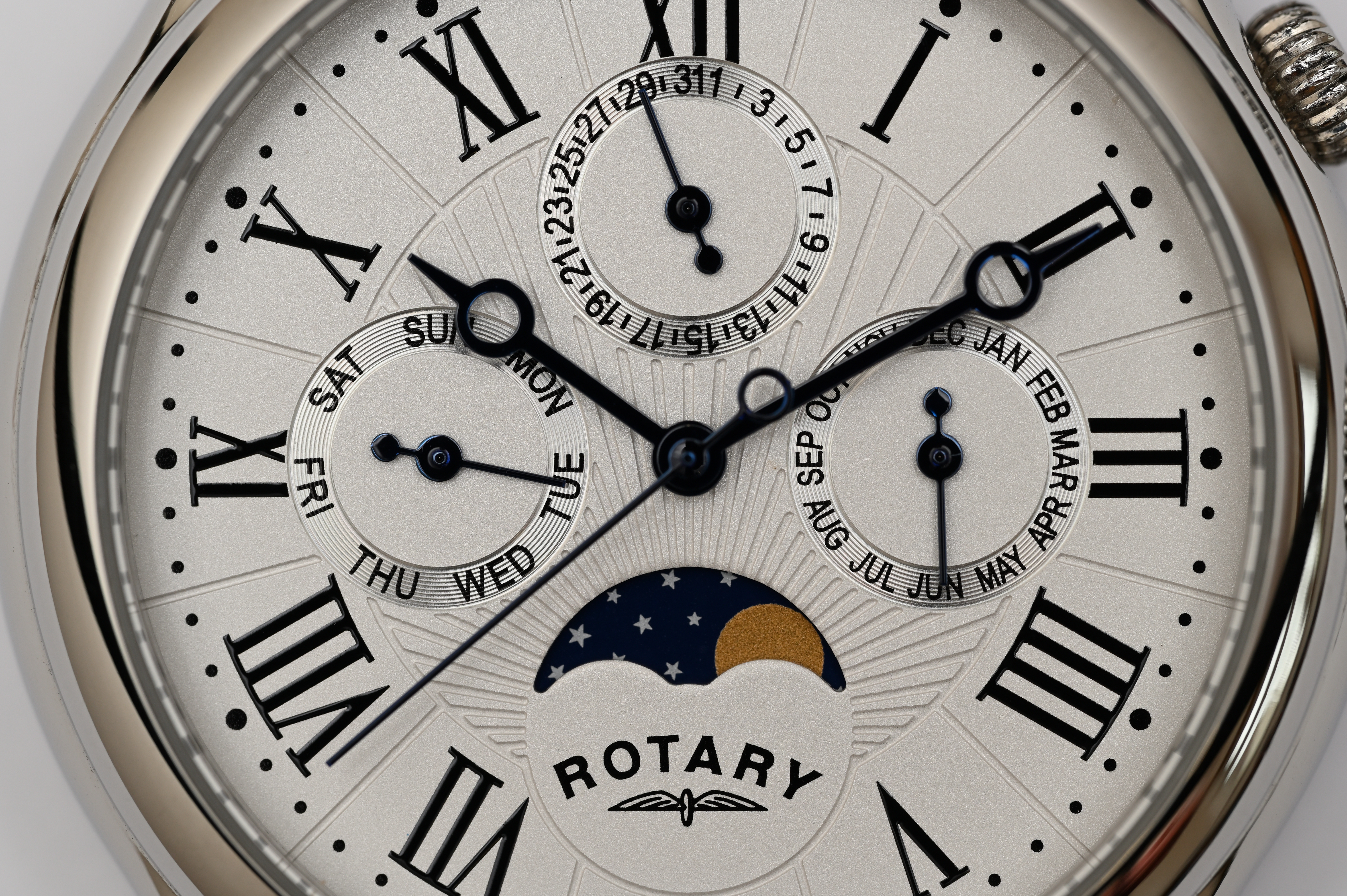

Features ★★★★★ | Top-notch features include a customizable function button and multi-mode OLED info display panel. |
Design ★★★★★ | Build quality and handling are fully pro-grade, with plentiful weather-seals and an additional customizable control ring. |
Performance ★★★★★ | Image quality is flawless for extreme close-ups at up to 1.0x magnification, as well as for portraiture and still life photography. |
Value ★★★★★ | It’s certainly not a cheap lens but it’s nevertheless excellent value for an own-brand Nikon lens of this quality and performance. |
Best superzoom
Specifications
Reasons to buy
Reasons to avoid
✅ You want a versatile lens that covers everything from wide-angle to telephoto in a single compact package, making it perfect for travel.
✅ You want effective image stabilization, with a 4.5-stop optical stabilizer that works alongside in-body stabilization on full-frame cameras
❌ You want a faster aperture, as the f/6.3 maximum aperture at the longest focal length may limit its performance in low-light situations.
❌ You want optimal wide-angle coverage on DX-format cameras, as you lose some wide-angle ability due to the crop factor.
The biggest draw of the Nikon Z 24-200mm f/4-6.3 VR is undoubtedly that huge zoom range. Being able to go from a wide 24mm for landscapes or cityscapes all the way to 200mm for picking out distant details, without ever needing to swap lenses, is incredibly freeing. Despite this range, it’s relatively compact and lightweight, which is a massive bonus when traveling. The built-in 4.5-stop optical stabilizer (VR) works really well, helping achieve sharp shots even when shooting handheld at the longer end of the zoom or in dim lighting.
For a superzoom, its sharpness holds up remarkably well, delivering results that I’ve found comparable to carrying separate standard and telephoto zooms. The autofocus is generally fast and accurate, which is crucial when you’re trying to capture fleeting moments. Weather seals and the fluorine coating on the front element are a bonus when shooting in less-than-perfect conditions. The customizable control ring is a nice touch too, which I usually set for manual focus override.
Of course, it's an f/4-6.3 lens, so it’s not the fastest glass out there, especially at the telephoto end. This means it's not my first choice for very low light or for achieving extreme background blur. However, for its intended purpose as a travel and all-round lens, the convenience and reach it offers, combined with its solid image quality and effective VR, make it a really compelling option.
When used on a DX-format Nikon, you gain telephoto reach but lose some wide-angle ability, with the ‘effective’ zoom range equating to 36-300mm, so DX users might find the Nikon Z DX 18-140mm f/3.5-6.3 VR a better bet, which has a similar 24-210mm equivalent focal length.
See our full Nikon Z 24-200mm f/4-6.3 VR review
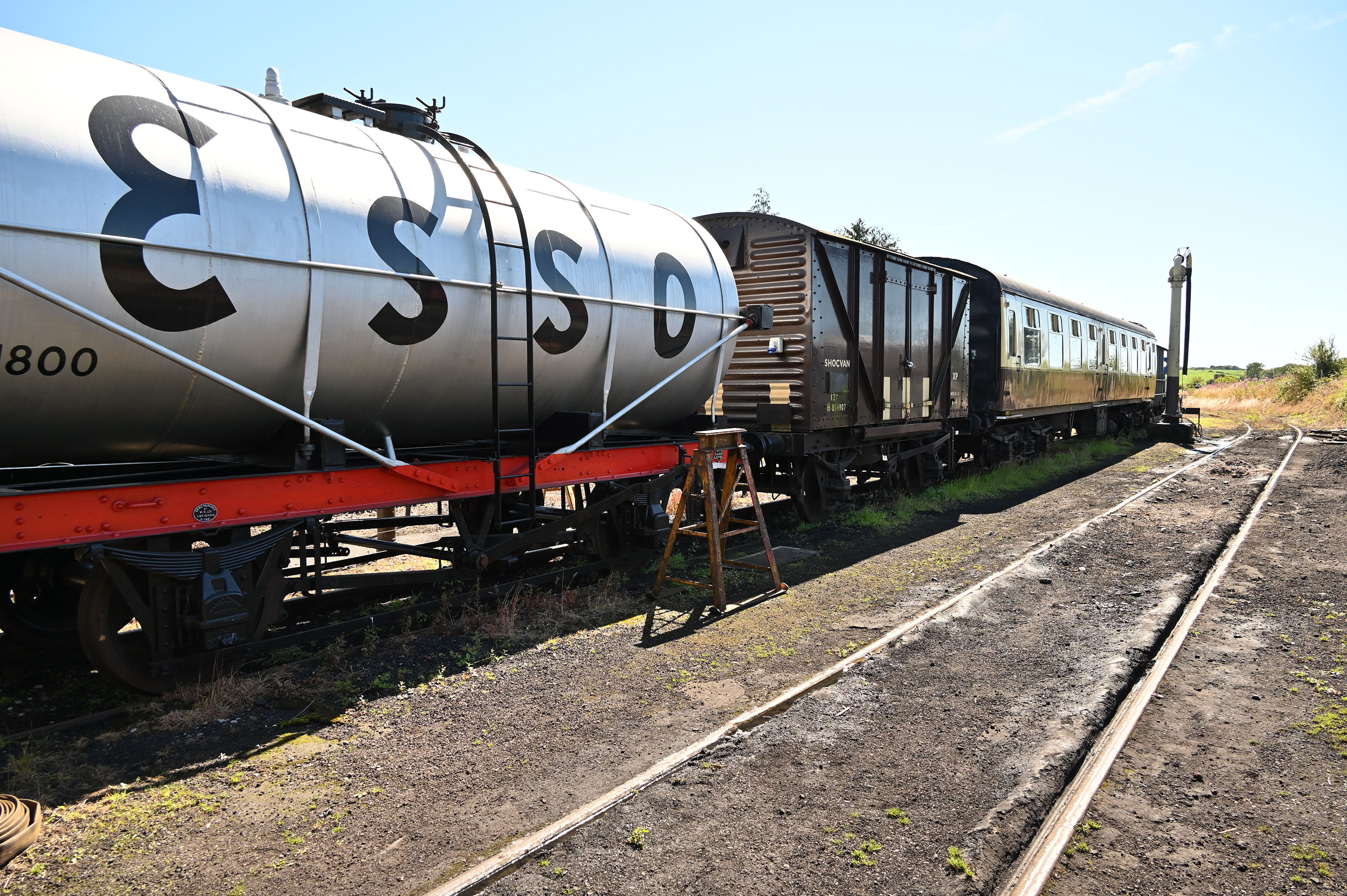


Features ★★★★1/2 | Sharpness is very good for a superzoom, and 5-stop IBIS helps beat the shakes. |
Design ★★★★★ | Compact and lightweight considering its epic zoom range, making it an ideal travel companion. |
Performance ★★★★★ | While it can't match Nikon's 28-400mm superzoom for outright reach, it wins out for image quality. |
Value ★★★★1/2 | It's like getting a full-frame standard and telephoto zoom in one, albeit with a sluggish max aperture at the long end. |
Best kit lens
Specifications
Reasons to buy
Reasons to avoid
✅ You want a supremely portable ultra-compact lens, this weighs just 135g and measures only 32mm in length when retracted, making it ideal for travel.
✅ You want impressive image quality across the zoom range, with great sharpness and contrast even when shooting wide open.
❌ You want a wider aperture, as the maximum aperture of f/3.5-6.3 may limit low-light performance and depth of field control.
❌ You want top-build quality, as the lens does feel plasticky compared to other more upmarket Z-series lenses.
The first thing that struck me about the Nikon Z DX 16-50mm f/3.5-6.3 VR is just how tiny and lightweight it is. It’s a true pancake design when retracted, making the attached camera incredibly easy to slip into a small bag or even a large pocket. This is a huge win for travel and everyday street photography. The 16-50mm range (which works out at 24-75mm in full-frame terms) is really versatile, covering everything from wide-angle landscapes to decent portrait lengths.
Performance-wise, it's a big step up from older F-mount DSLR kit lenses. The Z mount helps it deliver pretty impressive sharpness, especially in the center of the frame. The built-in VR (Vibration Reduction) is also very effective, offering a good few stops of extra stability, which is invaluable in lower light or when shooting video handheld. The autofocus is generally quick and quiet, and it can also focus surprisingly close, down to 0.2m, which is handy for those impromptu close-up shots.
It’s built to a budget, so the construction is mostly plastic, and it doesn’t have that premium feel of the S-line lenses. The maximum aperture of f/6.3 at the long end is a bit limiting if you’re trying to achieve a very shallow depth of field or shooting in really dim conditions. The manual focus ring is also quite narrow, which can be a little fiddly. But considering its size, weight, versatility, and the image quality it delivers for its class, I think the Z DX 16-50mm is a fantastic little lens. It really punches above its weight and makes for a brilliant everyday companion for any DX Z-series user.
See our full Nikon Z DX 16-50mm f/3.5-6.3 VR review
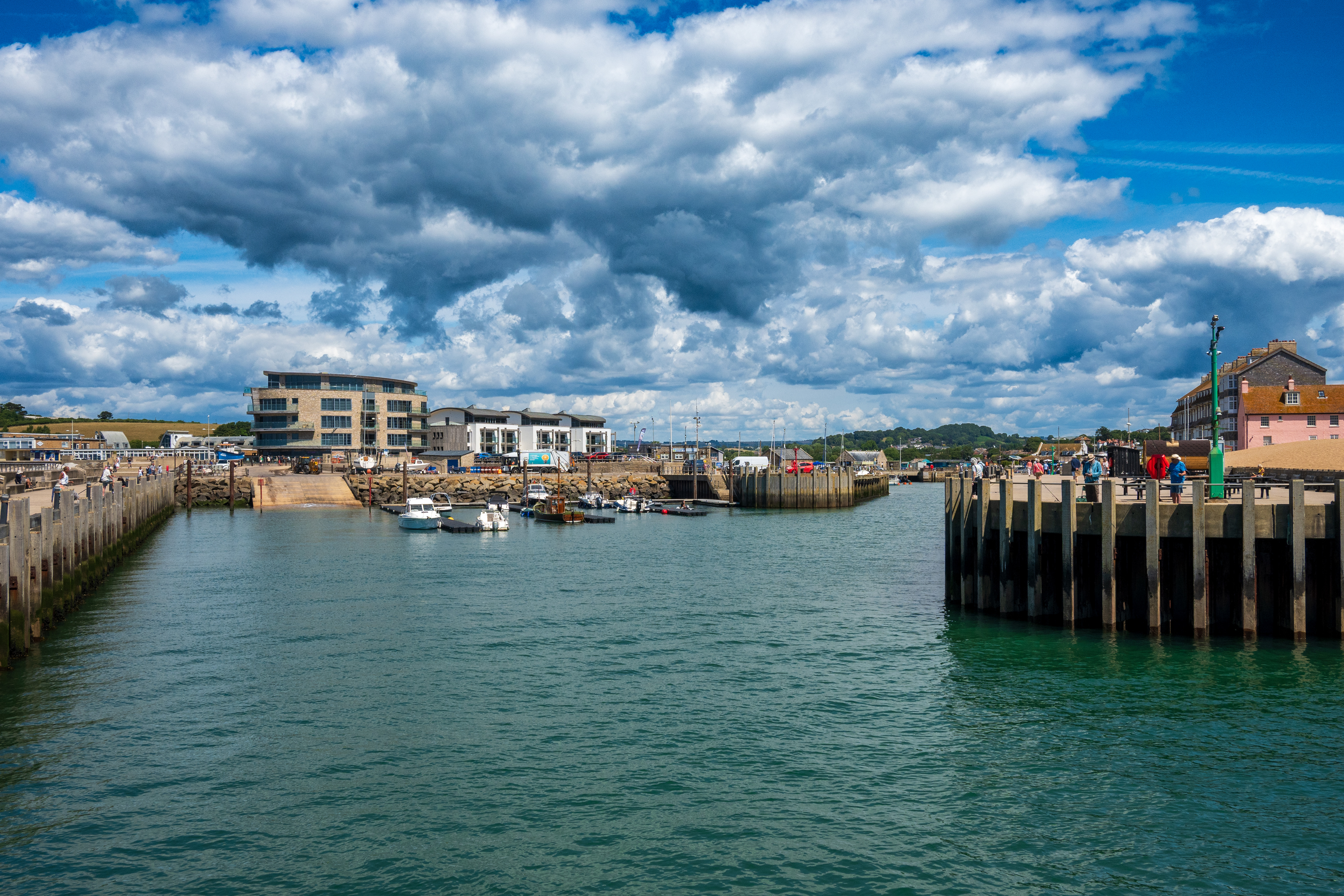


Features ★★★★★ | There’s a lot packed into this lens, including stepping motor-based autofocus and 4.5-stop optical VR. |
Design ★★★★★ | The retractable design enables an unfeasibly compact packing size, similar to that of a pancake lens. |
Performance ★★★★★ | Sharpness and clarity are very good and there’s minimal color fringing, but the lens relies typically heavily on automatic in-camera correction for distortion. |
Value ★★★★★ | It’s great value in its own right, even better if you get it as a kit lens with one of Nikon’s Z DX format cameras. |
Lab data and comparisons
The graphs below show the comparative performance of the lenses in this guide, based on our in-house lab tests. Unsurprisingly, the prime lenses lead the way for sharpness in this group, although the f/2.8 zooms also do very well on the whole. The superzoom and kit lens are at the back of the pack, but still perform admirably for these classes of lenses. Color fringing and distortion are well controlled on the whole, and automatic in-camera correction is available for these aberrations anyway, which often can’t be disabled.
Scores for sharpness and color fringing are averaged from data taken across the entire image frame, from the center to the edges and corners, throughout the aperture range. For zoom lenses, the scores are also averaged from data measured at all marked focal lengths, and the same applies to distortion. Bear in mind that these average values don't fully reflect specific areas of performance. For example, a zoom lens might have noticeable barrel and pincushion distortion at its shortest and longest focal lengths respectively, which tends to average out when looking at the data overall. For more detailed graphs of each lens's performance, which give the full picture, check out the graphs in our full standalone lens reviews.
How to choose the best Nikon Z lenses
While there are many reasons to choose one lens over another, and some lenses are always going to be better than others, ultimately, the choice of lens you make is going to be guided by what you plan to shoot. Whether you want a wide-angle, standard, or telephoto lens, whether you pick a prime or a zoom – it should all be determined by what you want to use the lens for. You likely wouldn't use the same lens to photograph a sweeping landscape, wildlife and a portrait.
Think about what you're planning to shoot and how you're planning to shoot it. Want to capture big vistas of landscapes and cities? A wide-angle lens will be perfect for filling the frame. Want to get naturalistic street shots and portraits? A standard lens (i.e. with a focal length around 24-70mm) will fit the bill. Looking to shoot sports, or capture images of elusive wildlife? A long-range telephoto will be a must.
You'll also need to weigh up your budget. Lenses with wide maximum apertures, high-speed autofocus motors and built-in optical stabilization systems are great to have – but they also cost more.
How we test Nikon Z lenses
We test lenses using both real-world sample images and lab tests. Our lab tests are carried out scientifically in controlled conditions using the Imatest testing suite, which consists of custom charts and analysis software that measures resolution in line widths/picture height, a measurement widely used in lens and camera testing. We find the combination of lab and real-world testing works best, as each reveals different qualities and characteristics.
Nikon Z lenses: frequently asked questions
What are Nikon S-Line lenses?
This term denotes Nikon's top-end range of optically superior lenses. If you see an 'S' in a Nikon lens' name, that means it's part of the S-Line, and is designed to offer pin-sharp resolution, with (according to Nikon) 'superb point-image reproduction, even at the widest apertures'. They're designed to reproduce point light sources more accurately, and provide aesthetically pleasing bokeh characteristics. As such, they tend to be the more expensive members of the line-up.
Can you use Nikon Z lenses on DSLRS?
No. While it is possible to mount Nikon F-mount lenses to Z-mount mirrorless cameras, via the FTZ and FTZ II adapters, there is no way to do the reverse, due to the wider opening and reduced flange distance of the Z-mount system.
Are there third-party Nikon Z lenses?
Yes! While in this guide I've kept to Nikon-made lenses only, there are third-party options for Nikon Z that are well worth checking out. Both Sigma and Tamron have released autofocus lenses for the system, and there are an increasing number of very capable and attractively priced lenses from upcoming manufacturers like 7artisans, TTartisans and Venus Optics (Laowa).
Best lenses for your Z-series camera
While I reckon this guide highlights the best lenses for most people, owners of different Z-series bodies will have varying priorities, so don't miss these camera-specific lens guides…
- Best lenses for Nikon Z30
- Best lenses for Nikon Z fc
- Best lenses for Nikon Z50/Z50 II
- Best lenses for Nikon Z5/Z5 II
- Best lenses for Nikon Z6 II/Z6 III
- Best lenses for Nikon Zf
- Best lenses for Nikon Z7 II
- Best lenses for Nikon Z8/Z9
The best camera deals, reviews, product advice, and unmissable photography news, direct to your inbox!

Prior to joining digitalcameraworld.com as Guides Editor, Adam was the editor of N-Photo: The Nikon Magazine for seven years, and as such is one of Digital Camera World's leading experts when it comes to all things Nikon-related.
Whether it’s reviews and hands-on tests of the latest Nikon cameras and lenses, sharing his skills using filters, tripods, lighting, L brackets and other photography equipment, or trading tips and techniques on shooting landscapes, wildlife and almost any genre of photography, Adam is always on hand to provide his insights.
Prior to his tenure on N-Photo, Adam was also a veteran of publications such as PhotoPlus: The Canon Magazine, so his wealth of photographic knowledge isn’t solely limited to the Big N.
